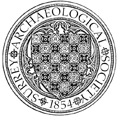Pound Cottage, Brockham Green, Brockham
Watching brief by W Weller of SCAU revealed no finds or features of archaeological interest.

A ground penetrating radar survey by M Udyrysz of SUMO of the church interior and land immediately to the south revealed numerous probable and possible burials and a number of uncertain anomalies.